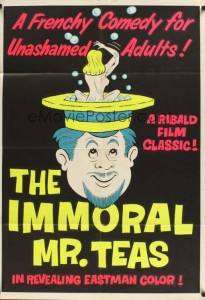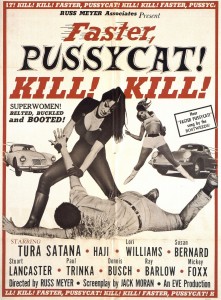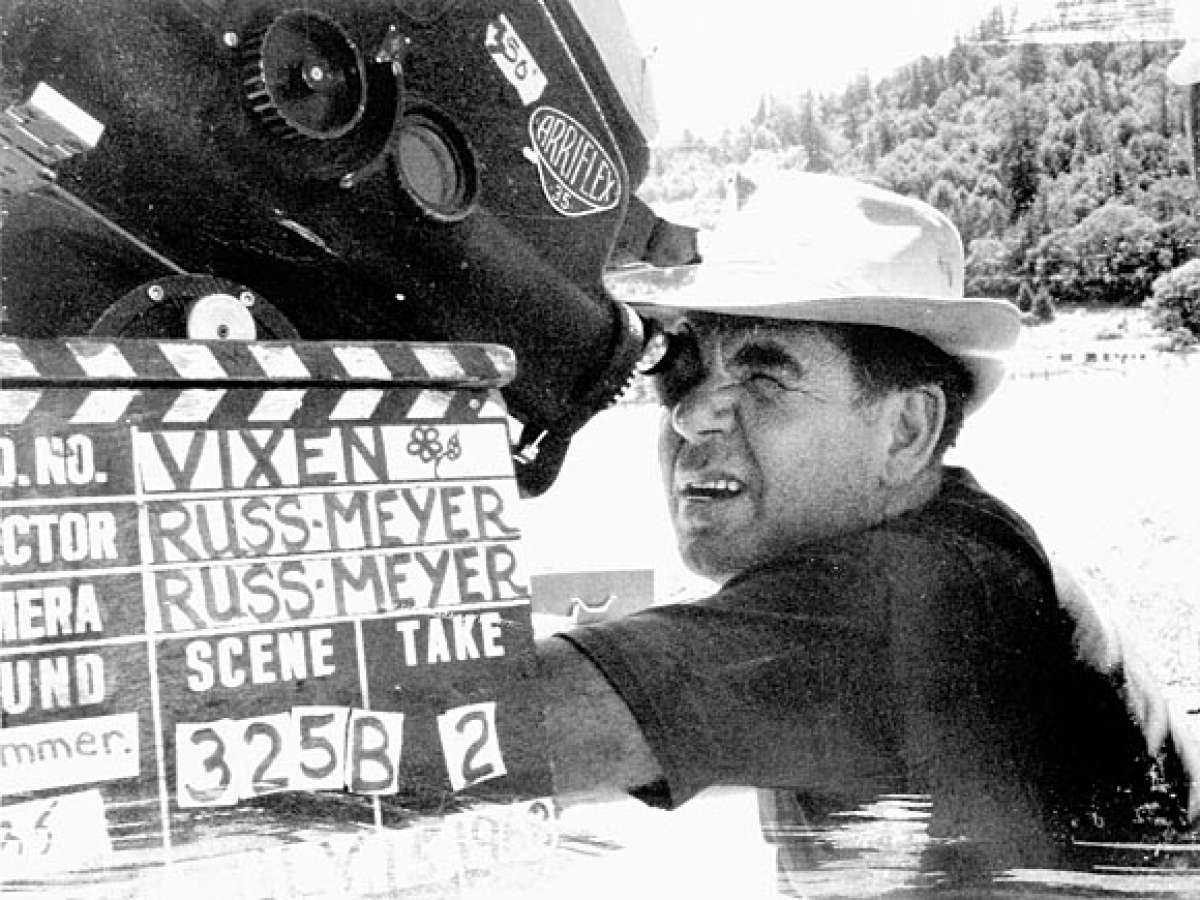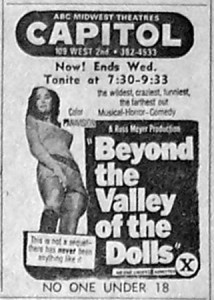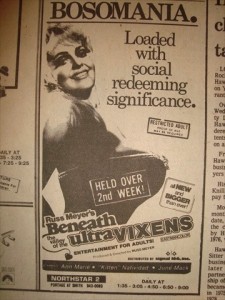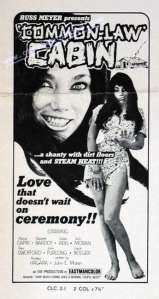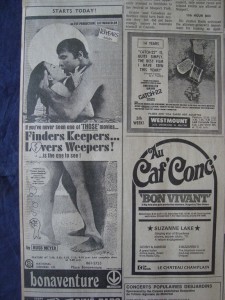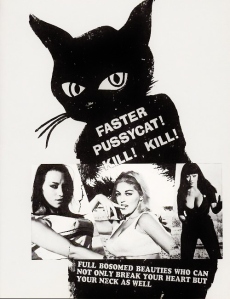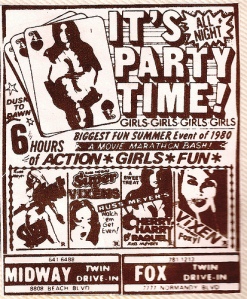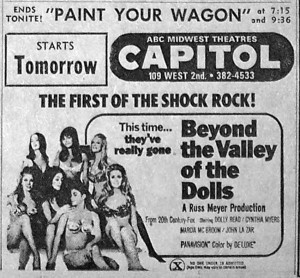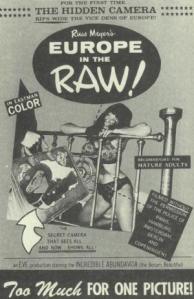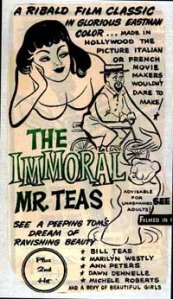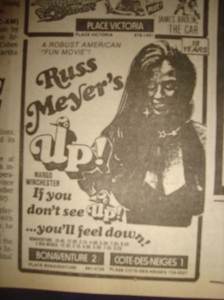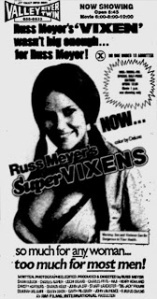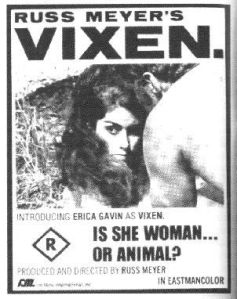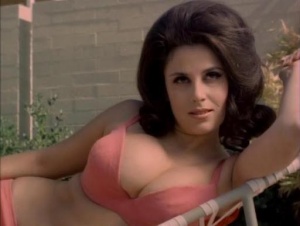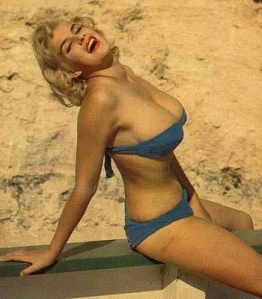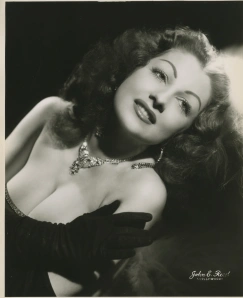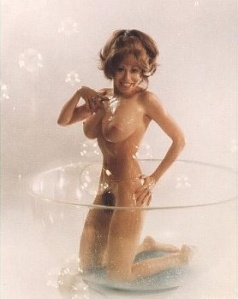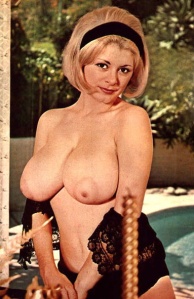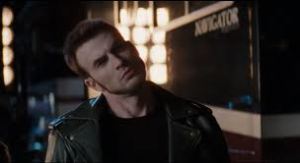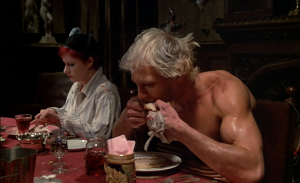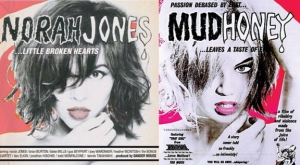Everyone is a collector of something. Human beings seem to find a ‘thing’ that they love, cling on to it for dear life and hoard as much of it as they can to bring them joy, pride and, occasionally, money. I have yet to meet anyone who doesn’t collect something, or used to house a collection of items in their past. I’ve collected many things during my 33 year existence, the most prolific being movie posters and memorabilia. It’s addictive, sometimes expensive, and it quickly grows on you. Eventually I realised that I needed to downsize; there were a lot of things I owned that sparked a joy within me, but ultimately I felt that they no longer had a place in my life. During the pandemic I decided to start selling off a lot of what I had acquired and decided to focus my personal collection on solely collecting and building my own Russ Meyer archive. As I said last November, my plan is to overhaul this blog over time, eventually turning it into a (predominantly) online Meyer archive (with the odd non-Meyer related article), and I will add the various pieces of memorabilia that I have amassed on here too for visual records. Whilst looking for articles for this years MEYER MONTH I stumbled across this short piece on WorthPoint, which as a collector and fan I found quite interesting, so I’m hoping that some of you will too. The original can be found here, but I have transcribed it below.
‘The Immoral Mr. Teas’ US 1-Sheet poster, 1959. Sex and humor were good bed-fellows from very early on in Meyer’s films. (Photo: http://www.emovieposter.com)
Like it or not, sex sells! Unsurprisingly, sex figures prominently in popular culture through history. Early movies were quick to capitalize on sex, although the introduction of the Hays Code in 1930 and the resulting strict censorship kept things fairly buttoned up for nearly four decades.
The more laissez-faire attitudes following the Second World War, however, resulted in a steady move to explore sex on screen in more daring ways. Most often, sex was used purely for commercial exploitation and pretensions of high art did not figure into the mix. One of the earliest—and most successful—directors to mine the oeuvre was Russ Meyer (1922-2004).
Christie’s Rate Russ Meyer
In December 2005, Christie’s held an auction of “Exploitation Art” in London. The first 15 lots in the auction were all for Russ Meyer movies. This was an important event, as it brought validation to collectors of the associated genres. The first Christie’s lot featured a poster for ‘The Immoral Mr. Teas‘ (1959), this being Meyer’s debut movie. Being an early such poster, a light-hearted risqué experience was suggested whilst genuine eroticism took a back seat. Nice examples of this poster will cost $300-400.
Time Marches on and Clothes Fall Off
Within five to six years, the dawn of the new “permissive age” meant that Meyer was able to document the activities of his buxom starlets with increasing quotients of nudity. By this time, the Motion Picture Association of America (MPAA) abandoned the Production Code in favor of the new MPAA film rating system . Poster advertising was always constrained by virtue of being on public view, but compared to ‘Mr. Teas‘ the poster for ‘Up!‘ (1966) shows how things had progressed. ‘Up!‘ shows that Meyer and artist Tom Chantrell were clearly on the same wavelength. (SIDE NOTE FROM LYDIA – ‘Up!’ was actually released in 1976 and not 1966. The poster referenced is the British quad poster that was made for the 1976 release in the UK. Tom Chantrell was a wonderful British artist who designed and painted some amazing film posters, some of which you will recognise from their now iconic and historical imagery. You can buy posters, promotional materials and original artwork from his estate.)
The quad poster focused on the key ingredient of Meyer’s movies (i.e., large breasts), and his tongue-in-cheek illustration for the poster is eye-popping in its outrageousness. The coincidence of these two collectable names means this poster can command prices of $600-$700. Also from 1966 is ‘Mondo Topless‘. The increasing adventure and ribald nature of Meyer’s films meant that in the UK, this film failed to gain a release until 1984. At this point, a quad poster with a retro feel was commissioned. The poster clearly promised an abundance of female flesh and has become a much sought after Meyer classic (valued at $500-$600).
‘Faster, Pussycat! Kill! Kill!‘ US 1-Sheet poster, 1965. This is an original from 1965, but be careful as the 1995 re-release looks similar. (Photo: http://www.impawards.com)
Violence & Inter-Racial Sex Spice Things Up
Of course, Meyer had company on both sides of the Atlantic as copycat nudie films and copious low-budget sex-comedy movies were being churned out. Unless illustrated by collectable poster artists (Chantrell, Peffer, etc.), most such movie posters are of limited interest. Meyer’s response to the competition was to shift from the tongue-in-cheek humor of his earlier films to embrace more adult themes. ‘Faster, Pussycat! Kill! Kill!’ (1965), for instance, featured some significant violence. The fact that the violence was being perpetrated by three buxom strippers on hapless males, however, still stamped the film with Meyer’s trademark fascination for all things mammary! Original 1965 US 1-sheet releases will cost you $1,750 to $2,000.
Original Poster Artwork Wets the Appetite
Until the 1990s, most movie posters in both Britain and the US were based on painted illustrations and, unfortunately, the bulk of this original artwork was lost. Some artists never got back their work back while others who did sometimes trashed it themselves! As movie poster collecting has gathered force over the past three decades, poster values and appreciation of the artists behind the posters has developed as well. We have already touched upon the “match made in heaven” between Meyer and the British artist Chantrell, whose deliciously over-the-top artwork for the 1981 British re-release of ‘Vixen!‘ (1968) and ‘Cherry, Harry and Raquel!’ (1970) is a good example. Painted on artboard with an acetate overlay for the text, this piece encapsulates Meyer’s idiosyncratic and irreverent contribution to the world of 20th Century cinema. Expect to pay in the region of $3,500-$4,000 for similar pieces of original artwork.
Conclusion
For many years, aficionados of sexploitation movie posters were regarded as fringe participants in the world of movie poster collecting. This sector is still relatively under-valued but certain movie-makers stand out. Russ Meyer is one such leading light. Meyer posters vary in price but an entry level for most pockets is available. If you’re broad-minded and have a sense of humor, then this just might be the place for you!
Mike Bloomfield has been collecting cinema & music memorabilia, with a particular focus on UK concert memorabilia & quad cinema posters from the 1960s and 70s, for 30 years. He runs the two MEM Music and Cinema Memorabilia websites — RockPopMem and MoviePosterMem, holds private exhibitions too, provides insurance valuations, a consultancy service to the auction industry, and has contributed to various book publications. You can e-mail him at info@memcollect.co.uk .

